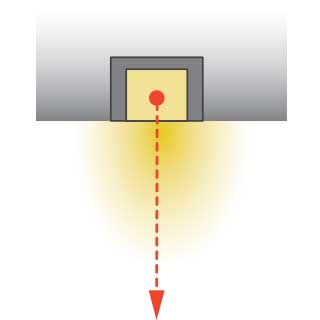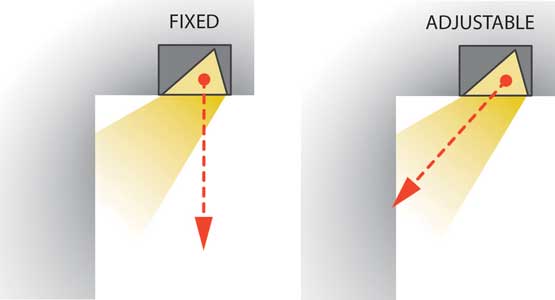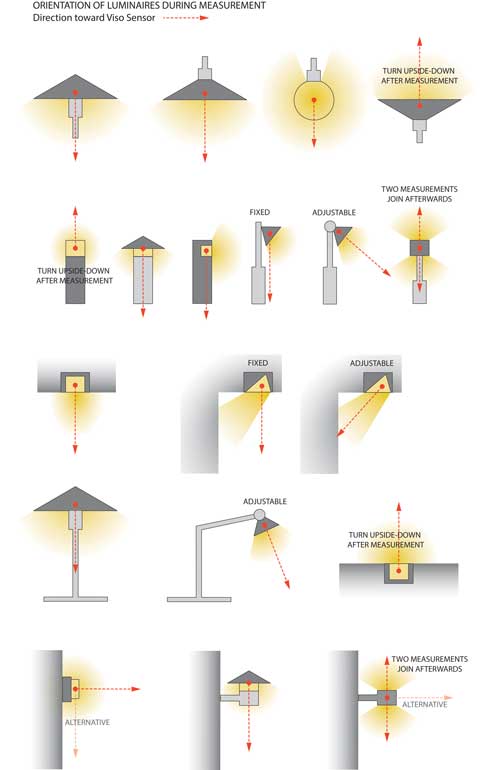Orientating your light sources on the goniometer is not always easy. The orientation is very important for your clients downstream and just how easy it will be for lighting designers to use your IES/LDT files. Get the new overview.
The general rule

In the lab, the main light direction of your luminaire in the “real life” burning position should be directed toward the sensor (i.e. in the 0-degrees direction). This is easy to understand for a downlight, where the light is predominantly emitted downward toward the floor. On the goniometer, the bottom of the downlight should of course face the sensor. But what about a wallwasher? And what about a side-emitting bollard?
The best guideline is thinking about how your clients would use the final IES/LDT file in their design software (Relux, Dialux, Agi32 and the like). When dragging the light distributions into the software, the 0-degree direction will be directed downward.
Hence, for a fixed wallwasher, you should keep the “normally down” direction toward the sensor. In this way, you will make sure that when your clients place this downlight in ceiling of the designspace it will be assymmetrical and automatically orientate the light toward the wall.
In adjustable wallwashers, you may turn the dominant light direction toward the sensor, as your client will expect to manually orientate the light source after placing it in the design space.



